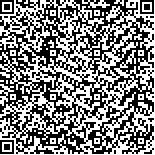The Effects of Cloud’s Vertical Inhomogeneity on the Reflectance of 3.7 μm Channel
- Article
- Figures
- Metrics
- Preview PDF
- Reference
- Related
- Cited by
- Materials
Abstract:
The satellite’s 3.7 μm channel is widely used in the retrieval of cloud droplet effective radius. In order to know the effects of cloud droplets’ vertical inhomogeneity on the reflectance of this channel, based on the SBDART radiative transfer scheme, the 3.7 μm reflectance is calculated separately for two particle profiles, the droplet effective radius in the vertical stratified homogeneous distribution and the droplet effective radius in the vertical continuous changing distribution. For the first type, if it is the thin cloud (optical thickness less than 10), there will exist obvious errors when the effective radius of vertical inhomogeneous cloud is retrieved as the vertical homogeneous cloud, and the error decreases with the increase of the optical thickness. If the cloud is thick enough (optical thickness greater than 10), the error will be less than 10%. In this case, we can regard that the changes of cloud droplets’ vertical structure do not influence the reflectance of 3.7 μm channel. For the second type, the results show that when the optical thickness is large, the 3.7 μm reflectance only can be affected by the cloud parameters near the cloud top’s “shallow” part (effective radiation layer, whose optical thickness is about 3-10). There exists negative correlation between the optical thickness of effective radiation layer and the droplet effective radius near cloud top, the solar zenith angle and satellite zenith angle, but there has no obvious relation between the optical thickness and the relative azimuth angle.
Keywords:
Project Supported:
Clc Number:


Mobile website









